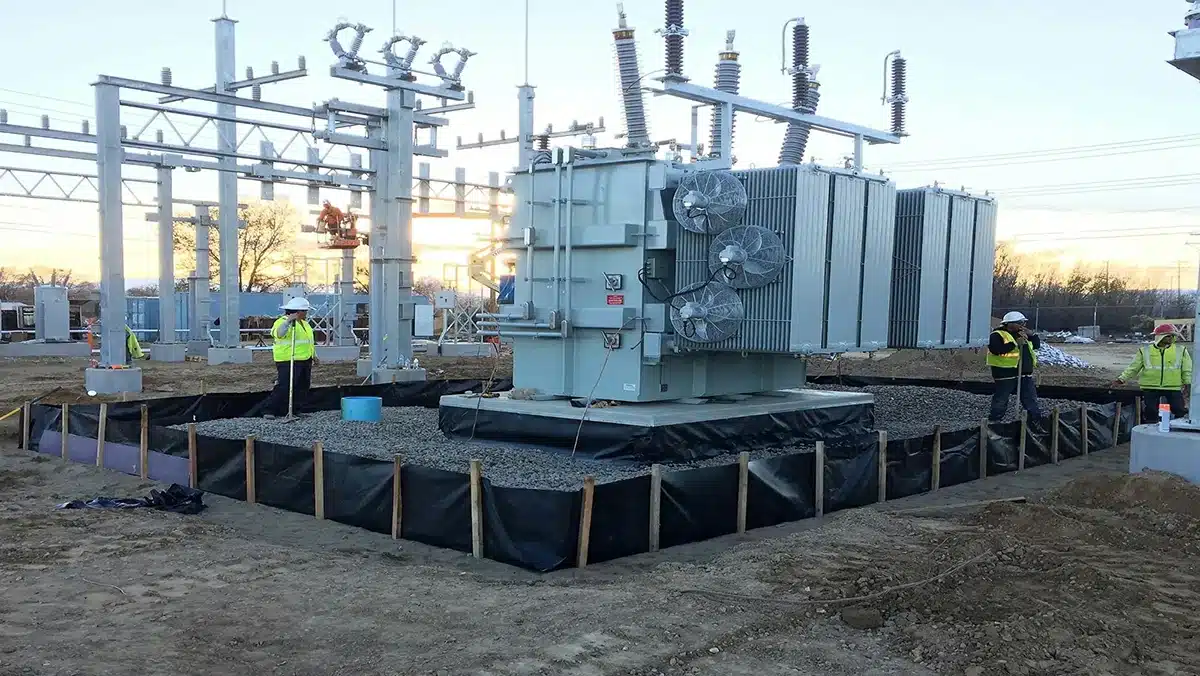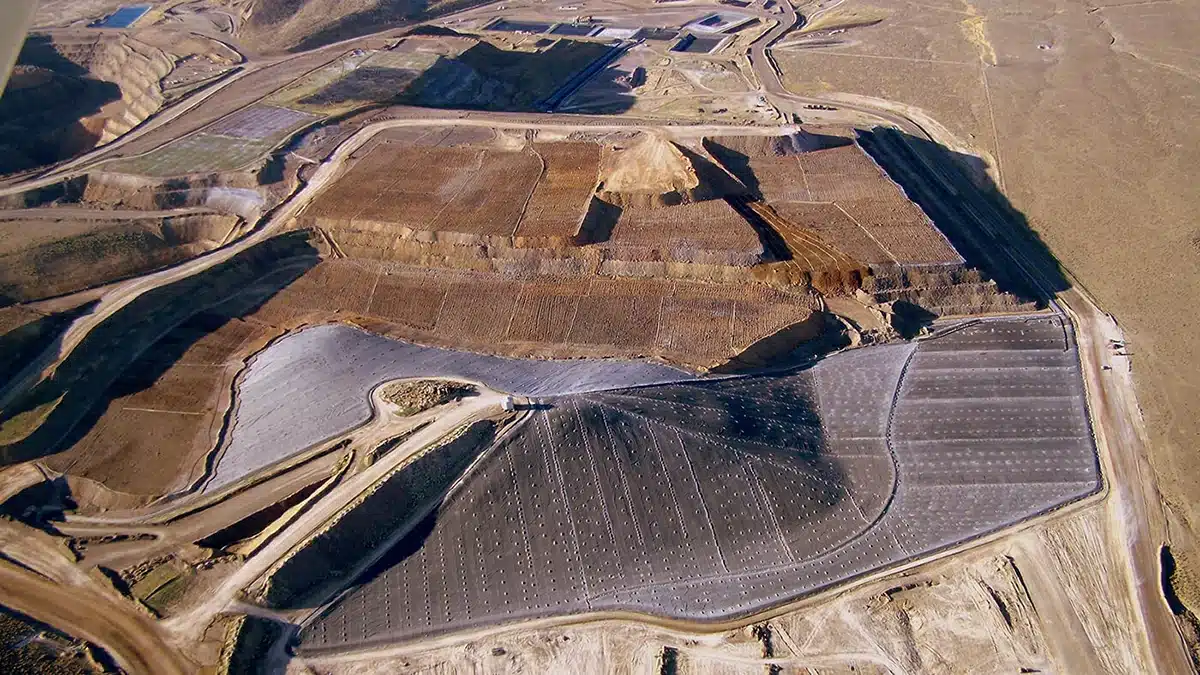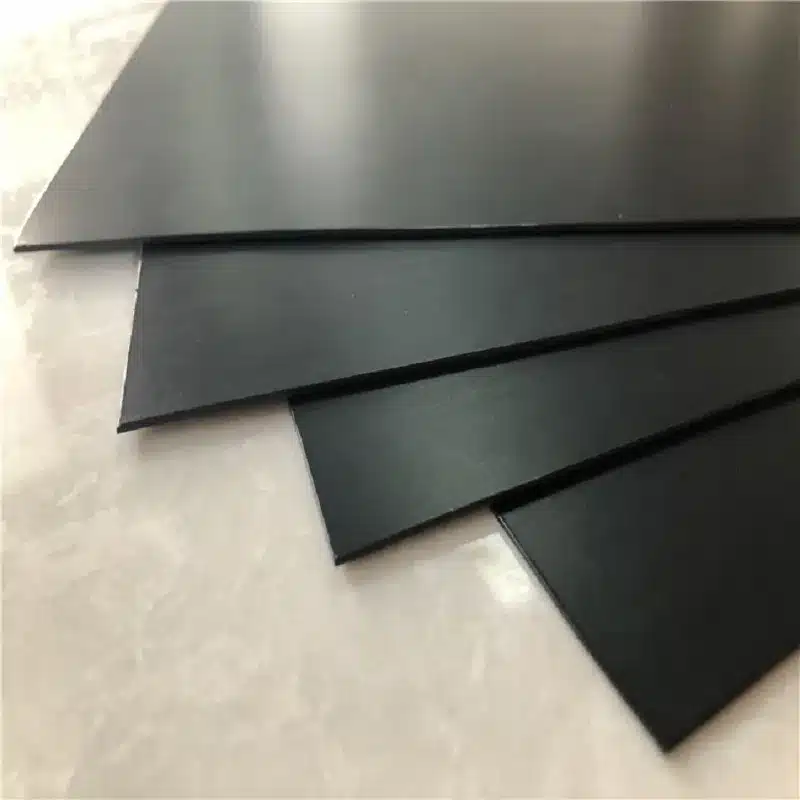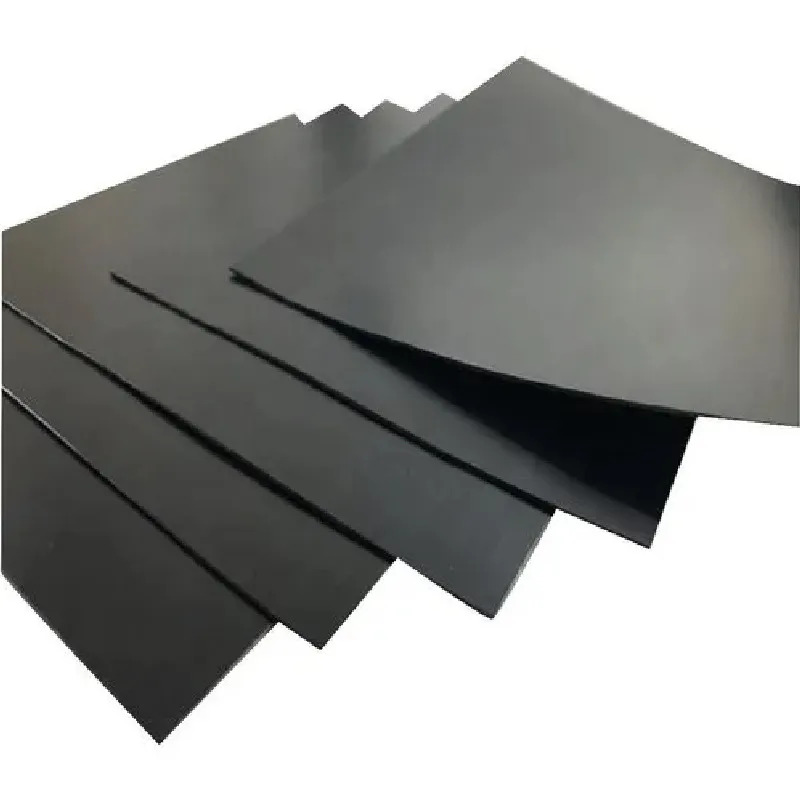+86-159 9860 6917
info@geofantex.com
geofantex@gmail.com
+86-400-8266163-44899
Environmental geomembranes play a crucial role in various industries, safeguarding our environment and ensuring the containment of liquids and hazardous materials. In this article, we’ll explore what geomembranes are, the different types available, and their primary functions, and address some common questions about this essential environmental protection solution.

What is a Geomembrane?
Definition: A geomembrane is a synthetic membrane liner or barrier used primarily to control fluid movement in various applications. It’s typically made from impermeable materials, providing a reliable barrier that prevents the migration of fluids or contaminants in engineering and environmental projects.
Materials and Types: Geomembranes are made from polymers like high-density polyethylene (HDPE), linear low-density polyethylene (LLDPE), and polyvinyl chloride (PVC). These materials ensure durability, flexibility, and resistance to UV and chemical degradation. Types of geomembranes vary based on thickness, surface texture (smooth or textured), and material composition, with each type tailored to meet specific project needs.
Applications:
Geomembranes are widely used in:
- Waste containment, such as landfill liners and covers, to prevent leachate contamination.
- Water management, like pond liners, dam reservoirs, and canal linings, to reduce seepage and maintain water quality.
- Mining applications, where they serve as liners for containment of toxic byproducts.
- Oil and gas sectors, in containment pits for fracking fluids and other hazardous materials.
Importance in Environmental and Engineering Contexts: Geomembranes are crucial for environmental protection, especially in projects requiring strict containment of pollutants. They prevent soil and groundwater contamination, support water conservation, and minimize environmental hazards. In engineering contexts, geomembranes offer a reliable, long-term solution for fluid containment, significantly enhancing the sustainability and safety of infrastructure projects.
What are the Different Types of Geomembranes?
Here’s an overview of the different types of geomembranes commonly used across industries:
High-Density Polyethylene (HDPE) Geomembranes
- Properties: High resistance to UV radiation, chemicals, and punctures; low permeability.
- Applications: Often used in landfills, mining, and water containment projects.
- Advantages: Long-lasting, durable, and suitable for large installations; offers excellent resistance to environmental stress cracking.
Low-Density Polyethylene (LDPE) Geomembranes
- Properties: More flexible than HDPE, with moderate chemical resistance.
- Applications: Suitable for projects requiring flexibility, such as reservoir linings and decorative ponds.
- Advantages: Easier to install in projects requiring flexibility and adapts well to irregular surfaces.
Polyvinyl Chloride (PVC) Geomembranes
- Properties: Flexible, easy to weld, and adaptable to various project shapes.
- Applications: Common in agricultural, decorative, and lightweight containment projects.
- Advantages: Highly adaptable for small projects; available in various thicknesses to match specific needs.
Ethylene Propylene Diene Monomer (EPDM) Geomembranes
- Properties: Superior elasticity and excellent UV and weathering resistance.
- Applications: Ideal for reservoirs, canals, and industrial ponds.
- Advantages: Exceptionally flexible and easy to install; highly resistant to extreme temperatures and environmental degradation.
Polypropylene (PP) Geomembranes
- Properties: Good flexibility and moderate chemical resistance; moderate durability compared to HDPE.
- Applications: Suitable for water and waste containment where flexibility is key.
- Advantages: Lightweight and offers flexibility without compromising strength.
Comparison of Properties
- Chemical Resistance: HDPE > LDPE > PVC
- Flexibility: EPDM > LDPE > PVC
- UV Resistance: EPDM > HDPE > PP
- Common Industries: Waste management, water containment, mining, and agriculture.
Each type is selected based on specific project needs, balancing factors like durability, flexibility, and environmental resistance.

What are the Main Functions of Geomembrane?
Geomembranes serve essential functions in environmental protection and containment:
- Liquid Containment: They create impermeable barriers to prevent liquid and hazardous material leaks, stabilizing the earth and securing landfills to contain hazardous or municipal wastes and their leachates.
- Gas Barrier: These barriers block the movement of gases like methane and radon, which can harm the environment and public health.
- Erosion Control: Geomembranes are essential in erosion control systems, preventing soil erosion and safeguarding structures such as dams and embankments.
- Waste Management: In landfills and waste storage, they isolate and contain hazardous materials, ensuring containment and preventing soil and water contamination.
- Water Resource Management: Geomembranes are used for efficient water storage and management, creating reservoirs, canals, and pond liners to stabilize the earth and secure landfills.
How Do Geomembranes Benefit the Environment?
Geomembranes offer several environmental benefits, including:
- Contamination Prevention: By acting as effective barriers, geomembranes reduce the risk of hazardous waste leaching into the soil and groundwater, protecting the environment and public health.
- Resource Conservation: Geomembranes can extend the lifespan of landfills, allowing for more efficient waste management and minimizing the need for additional landfill sites.
- Water Quality Preservation: They help maintain water quality by preventing contamination of surface and groundwater sources, ensuring the availability of clean water for communities.
- Erosion Control: In environmental restoration projects, geomembranes help control erosion and provide stabilization, aiding in the restoration of damaged ecosystems.
In conclusion, environmental geomembranes are indispensable tools in modern construction and environmental protection efforts. Their wide range of types and applications make them a versatile solution for various projects, and their vital functions contribute to safeguarding our environment. By preventing contamination and preserving valuable resources, geomembranes have a positive impact on the world around us.



Get Free Sample
We’ll respond as soon as possible(within 12 hours)






















